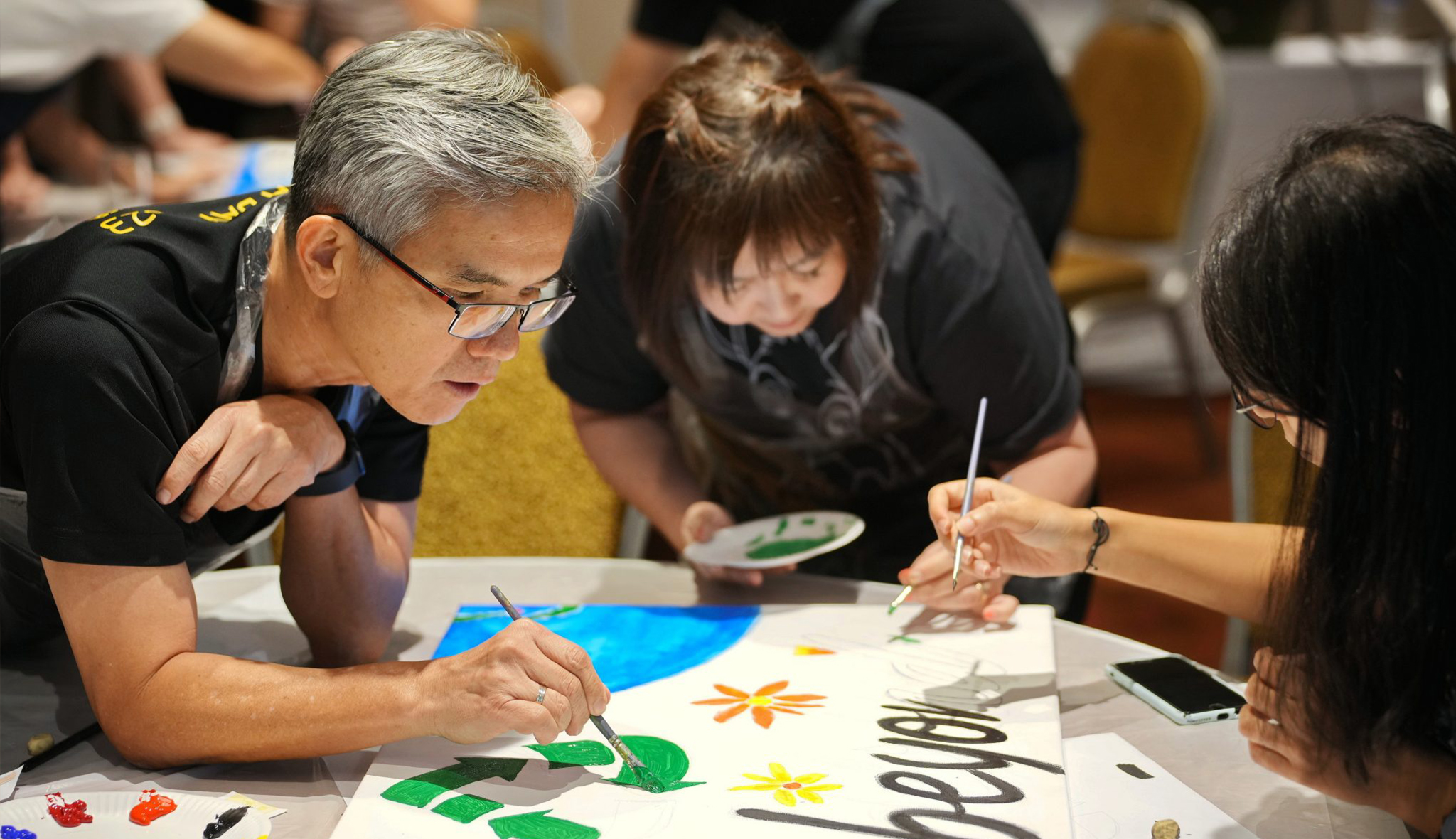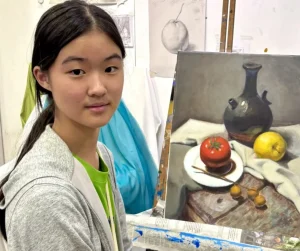Acrylic Painting on Canvas Team Bonding Art Jamming Singapore Visual Arts Centre


























学生正在画静物写生
作品集应展现你的艺术水平,创新思维,原创能力,艺术热情等。
你的作品集必须显示出你丰富的绘画技能和绘画经验。你要证明自己可以掌握各种绘画技巧,各种绘画材料的运用,并且拥有不同画种的表现手段的能力。

准备申请本地艺术学院,例如南洋艺术学院NAFA,拉萨尔艺术学院LASALLE,
那么,艺术作品集到底是什么呢?
“作品集是你自己作品的集合,能够展示你的技能和想法在一段时间内如何成长的。它应该能够显示您的创造力,个性,能力和价值认可,
并帮助我们评估您的未来潜力。 ”
作品集应展现你的艺术水平,创新思维,原创能力,艺术热情等。
你的作品集必须显示出你丰富的绘画技能和绘画经验。你要证明自己可以掌握各种绘画技巧,各种绘画材料的运用,并且拥有不同画种的表现手段的能力。



 我们的艺术作品集课程的内容包括:
我们的艺术作品集课程的内容包括:
(1)素描/速写训练,色彩训练,包括静物素描,石膏素描,风景素描,临摹优秀作品,人物肖像写生素描/速写。

准备作品集需要怎样安排时间?
确定作品集内容后,你
(1)素描/速写训练,色彩训练,包括静物素描,石膏素描,风景素描,临摹优秀作品,人物肖像写生素描/速写。






速写写生



学生完成的风景丙烯画作品
使用不同的材料制作3D模型
在新加坡视觉艺术中心,我们不仅会教您美术技能,我们的课程还包括:

优秀的艺术水平必须是包括创造性、原创性和思维,以及莫种形式的好奇心。你必须懂得如何用你的画笔将你的原创思想表现出来。
完成作品集的主题部分后,要进入评估,修改,优化
学习简单的艺术史,学习艺术欣赏,并学习如何流畅地表达自己的艺术思想和观念。
如果您的孩子想进入拥有特殊艺术才华的理想中学,并想以美术才华加分,被某中学顺利录取,你也要准备一份艺术作品集。


读小学的小朋友们可以参加我们的青少年基础绘画课程,从小打下扎实绘画基础。为日后升学或从事绘画职业做好准备。



|
||||||||||||||||||||||||||||||||||||||||||
|
||||||||||||||||||||||||||||||||||||||||||||||||||||||||||||||||||||||


SAT |
10:30am - 12:45pm1pm - 3pm
|
SAT |
|
10:30am - 12:45pm1pm - 3pm
|
|




Address:
10 Penang Road, #01-02 Dhoby Ghaut Green,
Singapore 238469
Exit from Dhoby Ghaut MRT Station Exit B and turn left, we are there in 30m!

Address:
AZ@Paya Lebar, 140 Paya Lebar Road, #03-04,
Singapore 409105
Exit from Macpherson MRT Station Exit A and turn left, we are right across the road, 1 minute walk away!
Have any questions? Please drop us an enquiry form and we’ll respond to you as soon as we can!
"*" indicates required fields
Click and get to our WhatsApp
Embark on a captivating journey into the vibrant world of digital art! Our Foundation in Digital Art workshop invites budding creatives aged nine and above to unleash their imagination and hone their artistic skills in a dynamic, supportive environment. From mastering basic digital tools to crafting mesmerizing digital masterpieces, children will explore a spectrum of techniques guided by seasoned mentors. Through hands-on activities and interactive sessions, participants will discover the endless possibilities of digital expression while fostering creativity and critical thinking. Join us for an exhilarating adventure where young artists transform ideas into stunning visual realities, igniting a passion for digital art
In the Batik Introduction Handkerchief Painting workshop, participants will learn the traditional art of batik, a wax-resist dyeing technique originating from Indonesia. The workshop begins with a brief history and overview of batik, highlighting its cultural significance and various techniques. Participants will then observe a demonstration of applying wax with tjanting tools and dyeing the fabric. Following the demonstration, each participant will design and create their own batik handkerchief, applying wax to create patterns and then dyeing their fabric. The workshop concludes with a group discussion, allowing participants to share their creations and reflect on their learning experience.